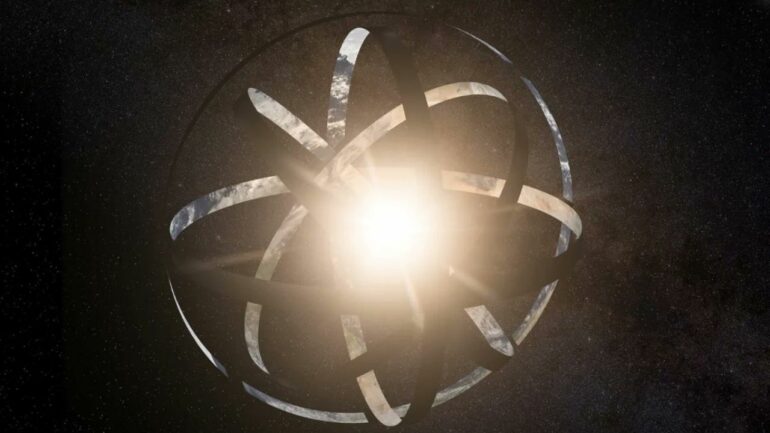Searching for Dyson spheres, rings or swarms remains a preoccupation of many astronomers. If there are any out there, they will eventually be found, and the person or research team to do so will go down in history for making one of the most momentous discoveries in the history of humanity. If you’re interested in claiming that accolade for yourself, an excellent place to look may be around white dwarfs. At least, that’s the theory put forward in a new paper by Benjamin Zuckerman, a now-retired professor of astrophysics at UCLA.
Dyson spheres are the stuff of highly advanced civilizations, commonly thought of as artificial spheres surrounding an entire star. However, if they are ever actually constructed, they are more likely to appear as a partially completed sphere, or even a ring or “swarm” of small habitats that encompass their host star. Collectively called DSRs by Dr. Zuckerman, any of these configurations would have one unique, tell-tale sign—they would change that star’s infrared signature.
That is the focus of the work by Dr. Zuckerman. His theory focuses on scanning white dwarves for anomalous infrared signatures that might indicate that an artificial construct surrounds them. But why white dwarves? Other than being reasonably ubiquitous, they have the distinction of being the end state of stars like our own.
The life cycle of a solar mass object would go through the main sequence, such as we are currently in, then balloon out to a red giant phase, potentially engulfing many of the planets the system has accumulated in the meantime. It would then collapse base into a white dwarf, where it exists for billions of years before potentially degenerating into a low-power black dwarf.
While white dwarves are still alive, they emit thermal radiation up to a few thousand degrees Kelvin, which could potentially be absorbed and reappropriated to power a DSR. However, as Dr. Zuckerman points out, that star would need to have developed a technological civilization before any such object is built around it, as any civilization capable of creating a DSR probably isn’t interested in building one around any particular white dwarf other than the one they grew up orbiting.
Zuckerman’s previous work points to the possibility that if there are, in fact, technologically advanced civilizations in the Milky Way, at least some of them would have experienced their host star turning into a white dwarf. If their response to this potentially cataclysmic event is to build a DSR around their now more stable star, then we should be able to see them using our new infrared telescopes.
In fact, there have been observational campaigns at both WISE and Spitzer. They both watched white dwarves with masses around what we would expect our own sun to turn into. They even noticed some incidences of anomalous infrared signatures. However, the researchers thought dust was the most likely cause of those anomalies, and there was no evidence of any DSR.
There has never been any evidence of a DSR anywhere in astronomical data, for that matter, much to the chagrin of alien hunters. But the absence of evidence is not evidence of absence—it just helps to constrain the likelihood. According to Dr. Zuckerman, with the observations we have already made, we can do a statistical calculation that less than 3% of habitable planets that orbit stars that eventually turn into white dwarves build a DSR around them. Granted, current estimates put the number of habitable planets around G-type stars that might ultimately evolve into white dwarves at 300 million—so there could still be upward of 9 million civilizations that have built a DSR around their white dwarf home star.
But for now, the Fermi paradox still holds, and science continues to collect data that will either further constrain the estimates of the number of advanced technological civilizations in our galaxy or prove that we’re not alone once and for all. Either way, more advanced infrared telescopes, like JWST, which is slowly coming online, are one of our best shots at finding them. And there will always be people out there who want to keep looking.
More information:
B Zuckerman, Infrared and Optical Detectability of Dyson Spheres at White Dwarf Stars, Monthly Notices of the Royal Astronomical Society (2022). DOI: 10.1093/mnras/stac1113
B. Zuckerman et al, Characterizing the Chemistry of Planetary Materials Around White Dwarf Stars, Handbook of Exoplanets (2017). DOI: 10.1007/978-3-319-30648-3_14-1
B. Zuckerman et al, Excess infrared radiation from a white dwarf—an orbiting brown dwarf?, Nature (2003). DOI: 10.1038/330138a0
Citation:
If there are Dyson spheres around white dwarfs, we should be able to detect them (2022, May 10)
